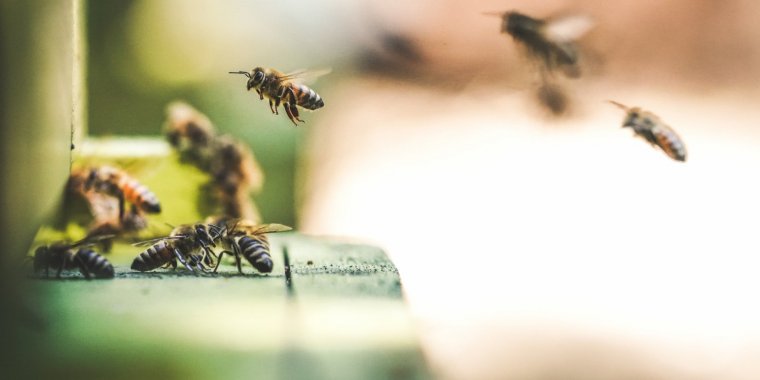| Health / Health News |
Discovery of RNA transfer through royal jelly could aid development of honey bee vaccines
Researchers have discovered that honey bees are able to share immunity with other bees and to their offspring in a hive by transmitting RNA ‘vaccines’ through royal jelly and worker jelly. The jelly is the bee equivalent of mother’s milk: a secretion used to provide nutrition to worker and queen bee larvae.

Honey bees are able to share immunity with other bees. Photo: Eric Ward/Unsplash
These transmissible RNA molecules are produced by the honey bee’s genes and by disease agents such as viruses. Unlike other RNA in the body, these RNA molecules do not code for protein. Instead, they play a direct role in immunity, gene regulation and other biological mechanisms.
In previous studies, scientists fed bees with RNA fragments that included a segment of an RNA virus. They found that similar to how vaccines work, the dietary RNA activated an immune response that prevented disease and death when hives were later exposed to the live virus.
Intriguingly, the colony maintained a healthy performance for several months after treatment had finished, suggesting that it was still immune to infection – even though the original treated bees would have died off and been replaced by new generations.
This suggested that the immunising RNA fragments were being passed among colony members as well as across generations.
In this new study, the researchers demonstrated that dietary RNA is taken up from the ingestion system into the bee’s circulatory fluid and spread to the jelly-secreting glands. The dietary RNA is then secreted with the jelly and taken-up by larvae fed on the jelly.
While scientists have previously shown in plants and animals that movement of RNA between cells within an organism is possible, these findings identify a molecular mechanism for transmission of RNA molecules between organisms.
Further experiments showed that transmissible RNA was able to activate a mechanism called 'RNA interference' to block the activity of some genes and reduce the production of certain honey bee proteins.
Importantly, RNA interference is known to provide defence against viral infection in honey bees and other organisms. In other words, these RNA molecules are likely acting to immunise the bees against infections.
The researchers next analysed the worker and royal jellies and revealed diverse types of naturally occurring RNA, some derived from bee genes and some from pathogens such as fungi and infectious viruses, suggesting that over time the bees had developed – and shared – immunity to these pathogens.
The findings demonstrate that bees share ‘transmissible RNA’ among members of the colony, likely as a way of sharing immunity among members and generations in the hive and to enable other bees to adapt to different environmental conditions.
In a second study, they investigated how RNA, which is an unstable molecule, is transferred through the jelly diet. They found that an abundant jelly ingredient, Major Royal Jelly Protein-3 (MRJP-3), binds the RNA to form granules that concentrate and protect it from environmental damage. This is the first identification of RNA granules with functions outside cells and organisms.
Honey bees have evolved a type of ‘glue’ that binds RNA into granules, making it more stable and so able to be shared with other bees.
It is possible that this honey bee protein may even have applications, too, for new vaccines and medicines for humans. (University of Cambridge)
YOU MAY ALSO LIKE




